Travel by Novel: Pacific Northwest
Best Historical Novels for
Travelers to the Pacific Northwest
Jump to:
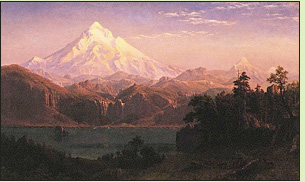
The Lewis and Clark Expedition
The Oregon Trail
Cowboys and Ranchers
Homesteaders and Other Settlers
Relations between Indians and Settlers
The 20th Century
Portland and Seattle
For Teens and Younger
The Pacific Northwest states of Oregon, Washington, and parts of Idaho and Montana in the U.S., along with the province of British Columbia in Canada, have a distinct cultural heritage. Once heavily forested, they were settled by Native American tribes such as the Chinook who lived in wooden longhouses that sheltered them during the Northwest's notoriously rainy winters. In 1804, Thomas Jefferson sent Army officers Meriwether Lewis and William Clark on a westward expedition to find a route across the continent to the Pacific Ocean through and beyond the recently acquired territories of the Louisiana Purchase. The Lewis and Clark Expedition was greatly aided by friendly Indian tribes they met along their way, and by the young Shoshone woman, Sacagawea, who served as their interpreter. They reached the ocean a short distance south of the mouth of the Columbia River and built an encampment called Fort Clatsop after the local Clatsop Indians. Fur trappers - known as "mountain men" - followed in their wake and eventually blazed an easier trail, though it was only passable on foot or by horseback.
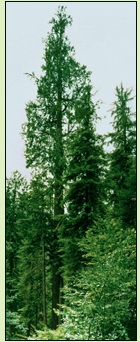
The first migrant wagon train on what would become known as the Oregon Trail left from Independence, Missouri, in 1836 and struggled to clear a trail wide enough for their wagons. Eventually, the sheer numbers of emigrants - some 80,000 reached the Oregon Territory between 1834 and 1860 - left tracks that are still visible today. Around four percent of the emigrants, according to one estimate, died along the way. Childbirth, wagon wheels heavy enough to crush children, and rivers forded by travelers who couldn't swim were just a few of the hazards. These early settlers mostly became farmers and ranchers. Logging soon became another major industry. Indian tribes suffered tragic losses from the diseases, especially measles, brought by the settlers. As in other parts of the American West, conflicts between white settlers and natives developed because the settlers were taking up land that had previously had been used by the native tribes.
As major cities like Portland, Oregon, and Seattle, Washington, developed, the culture became more sophisticated, offering theater, opera and art. Until recently, agriculture and forestry remained central to the area's economy. As the once-abundant salmon became over-fished, most rivers dammed and the dense coniferous forests logged, northwesterners came to appreciate the importance of environmental preservation.
Pacific Northwest winters have been rainy as long as people can recall, and they still are. Author Matt Love writes about rain in a blog post at Powell's books.
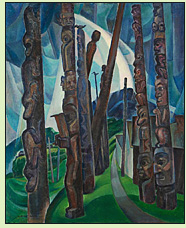
Before European Settlement
Click on the title for more information from Powell's Books or another online source.Kathleen O'Neal Gear and W. Michael Gear, People of the Raven (2004), about the Pacific Northwest and what the life of "Kennewick Man" may have been like; #12 in the First North Americans series. Review at the Historical Novel Society
Sue Harrison, Mother Earth, Father Sky, about a young woman on the northwest coast of America during the Ice Age who sets out on a sea voyage after her tribe is massacred; #1 in the Ivory Carver trilogy. Review at the L.A. Times
Patricia Rowe, Keepers of the Misty Time, about a woman who leads a migratory tribe in the Columbia River area 9,000 years in the past. Review at the Las Vegas Sun
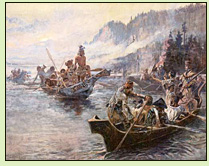
The Lewis and Clark Expedition
Click on the title for more information from Powell's Books or another online source.Win Blevins, Charbonneau: Man of Two Dreams (1975), a biographical novel about the son of Sacajawea, the Shoshone woman who translated for the Lewis and Clark expedition.
Vardis Fisher, Tale of Valor
Brian Hall, I Should Be Extremely Happy in Your Company (2003), about the Lewis and Clark Expedition; 2004 Spur Award winner. Review at Salon.com
James Alexander Thom, From Sea to Shining Sea (1986), about the parents and family of Merriwether Clark and Clark's experiences in the Lewis and Clark Expedition.
James Alexander Thom, Sign-Talker (2001), about George Drouillard, who accompanied the Lewis and Clark Expedition as their translator for Indian tribes they met along the way. Review at the Historical Novel Society
Anna Lee Waldo, Sacajawea, about the Shoshoni woman who accompanied the Lewis and Clark expedition. Review at The Western Online
The Oregon Trail
Click on the title for more information from Powell's Books or another online source.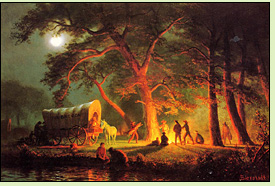
Karen Joy Fowler, Sarah Canary (1991), about a Chinese railway worker and an Anglo-American woman in the Pacific Northwest. Review at Publisher's Weekly
A.B. Guthrie, Jr., The Way West (1949), about a wagon train traveling west in 1846; won the Pulitzer Prize in fiction in 1950; sequel to The Big Sky. Review at the Late Bloomer blog
Jane Kirkpatrick, All Together in One Place (2000), about a group of women on the Oregon Trail in 1852; Christian message; #1 in the Kinship and Courage trilogy. Review at Wild Violet
Jane Kirkpatrick, No Eye Can See (2001), about a blind widow who settles in California after surviving tragedy on the Oregon Trail; Christian message; #2 in the Kinship and Courage trilogy.
Jane Kirkpatrick, What Once We Loved (2001), about a group of women struggling to make new lives for themselves in California and Oregon after surviving tragedy on the Oregon Trail; Christian message; #3 in the Kinship and Courage trilogy.
Allison K. Pittman, With Endless Sight (2008), about a fourteen-year-old girl who loses her family on the Oregon Trail and must depend on her faith in God to sustain her through the harsh trials that follow; Christian message. Review at Bibliophile's Retreat
Dana Fuller Ross, Independence! (1978), about a man who leads a wagon train from Independence, Missouri, to the Oregon Territory in 1837; #1 in the Wagons West series.
Dana Fuller Ross, Nebraska! (1979), about a man leading a wagon train through Nebraska on its way to the Oregon Territory in the autumn of 1837; #2 in the Wagons West series.
Dana Fuller Ross, Wyoming! (1979), about a man leading a wagon train across the Great Plains to the foothills of the Rocky Mountains on its way to the Oregon Territory in 1838; #3 in the Wagons West series.
Dana Fuller Ross, Oregon! (1979), about a man who leads the first wagon train into the Oregon Territory; #4 in the Wagons West series.
Cowboys and Ranchers
Click on the title for more information from Powell's Books or another online source.Molly Gloss, The Hearts of Horses (2007), about a nineteen-year-old girl who goes to work on an Oregon ranch in 1917. Review at the Historical Novel Society
Anna Keesey, Little Century (2012), about an eighteen-year-old Chicago girl who migrates to Oregon as a homesteader after she is orphaned, and discovers herself in the middle of a range war. Review at the New York Times
Homesteaders and Other Settlers
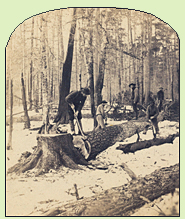
Megan Chance, Bone River (2012), about a woman in Washington Territory who learns her much-older husband has kept secrets from her after she discovers a mummy in a riverbank. Review at Publisher's Weekly
H.L. Davis, Honey in the Horn (1935), a Pulitzer Prize-winning novel about homesteaders on the Oregon frontier in the early twentieth century. Review at The Rumpus
Ivan Doig, The Sea Runners (1982), about runaway Russian servants crossing the Pacific to the mouth of the Columbia River in Oregon Territory in 1853. Review at Kirkus Reviews
Jane Kirkpatrick, A Clearing in the Wild (2006), about a German-American woman in a Bethelite religious colony in 1850s Missouri who takes the opportunity to push for freedom when she joins a group sent to the Northwest to scout a new location for the group; Christian message; #1 in the Change and Cherish trilogy. Review at the Historical Novel Society
Jane Kirkpatrick, A Tendering in the Storm (2007), about a German-American woman and her husband who break away from a confining religious community to make their own way in 1850s Washington territory; Christian message; #2 in the Change and Cherish trilogy.
Jane Kirkpatrick, A Mending at the Edge (2008), about a German-American woman struggling to balance her need for community and individual freedom in a confining religious community in 1850s Oregon; Christian message; #3 in the Change and Cherish trilogy.
Dana Hand, Deep Creek (2010), about a small-town judge in Idaho who investigates a massacre of Chinese miners along the Snake River and tries to bring the killers to justice. Review
Steven F. Havill, Race for the Dying (2009), about a young physician who arrives in a logging town on the Washington coast in 1891 to find that too many people are dying and the clinic he is supposed to work for is strangely organized. Review or Author Interview
Dana Fuller Ross, Washington!
Relations Between Indians and Settlers
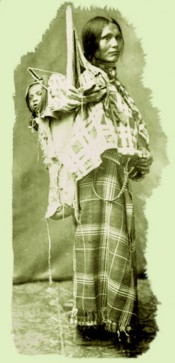
Jonathan Evison, West of Here (2011), about a fictional town on the Washington coast in 1890 and the present day, focusing on the residents' relationships with the land and a nearby Indian tribe. Review at the New York Times
Will Henry, From Where the Sun Now Stands, about Chief Joseph and his 1877 trek to lead the Nez Perce from their reservation in Oregon to a new home 1,000 miles away in Montana.
Pauline Holdstock, The Burial Ground: A Novella
Vella Munn, The River's Daughter
Vella Munn, Spirit of the Eagle
The 20th Century
Click on the title for more information from Powell's Books or another online source.Amanda Coplin, The Orchardist (2012), about a grower of apples and apricots in Washington State whose decision to take in two pregnant teenagers results in a violent confrontation. Review at The Oregonian
David Guterson, Snow Falling on Cedars (1994), about a man whose love for a Japanese-American girl sent to a relocation camp during World War II is reawakened after the war when her innocent husband is tried for murder; won the 1995 PEN/Faulkner Award.
Ken Kesey, Sometimes a Great Notion (1964), about an Oregon logging family who continue to cut timber during a period when union loggers have gone on strike; a contemporary novel at the time it was written. Review at the Seattle Post-Intelligencer
Ferenc Máté, Ghost Sea (2006), about a trader in turn-of-the-century British Columbia hired to rescue a man's wife from the Kwakiutl warrior who has kidnapped her. Review at the Historical Novel Society
Susan Vreeland, The Forest Lover (2004), about the early twentieth century Canadian artist Emily Carr and her determination to paint the totem poles of British Columbia. Review at the Book Reporter
Portland and Seattle
Click on the title for more information from Powell's Books or another online source.Megan Chance, Prima Donna (2009), about a promising young opera singer forced to flee New York and start over without money in the rough environment of Seattle in the Washington Territory.
Megan Chance, City of Ash (2011), about a Chicago socialite banished with her husband to the fledgling city of Seattle in 1888 and the actress who befriends her.
Peter Donahue, Madison House (2005), about a widow who owns a boarding house on Seattle's Denny Hill and refuses to sell when the city begins demolishing the hill for a regrading project.
Jamie Ford, Hotel on the Corner of Bitter and Sweet (2009), a coming-of-age story about a Chinese boy and a Japanese girl growing up in Seattle during World War II. Review at The Oregonian
Sharan Newman, The Shanghai Tunnel (2008), a new widow in 1868 Portland, Oregon, discovers her husband had been involved in unsavory activities. Review at The Mystery Reader
For Teens and Younger
Click on the title for more information from Powell's Books or another online source.Linda Crew, Brides of Eden (2001), about a girl who joins a group of other women traveling to the Oregon coast with a preacher, and then regrets her decision as the preacher demands cult-like obedience to his will.
Ruth Tenzer Feldman, Blue Thread (2012), about a sixteen-year-old girl in Portland, Oregon, who joins the women's suffrage movement in 1912 after her father refuses to let her work in his print shop. Recommended for ages 10-16.
Louise Spiegler, The Jewel and the Key (2011), about a Seattle high school girl of the near future who wants to work in the theater and slips back in time to 1917. Review
Joan Weir, The Brideship (1998), about a fifteen-year-old British orphan sent to British Columbia during the 1860s to be the wife of a gold miner.
Top of Page
Back to Travel by Novel Directory